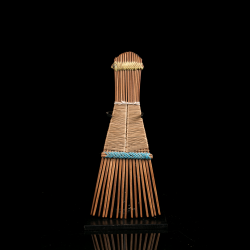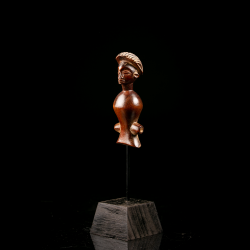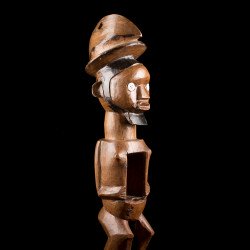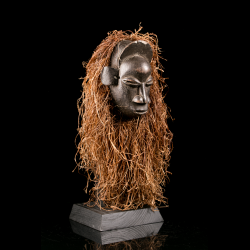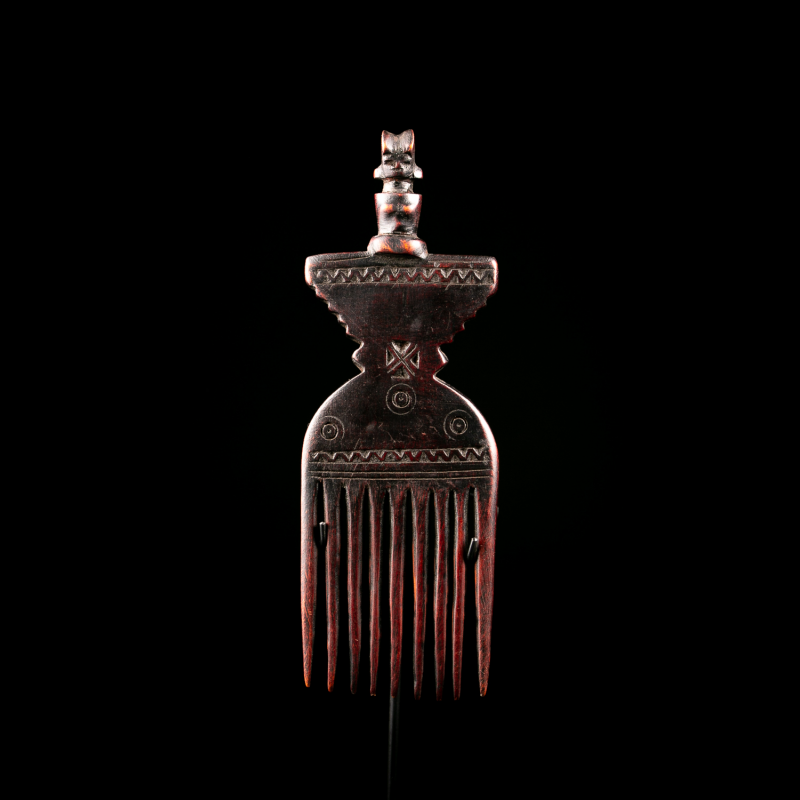












Known in African tribal art mainly for their mwana hiti figurines, the Zaramo are a Bantu people of Tanzania, mainly established in the coastal region around Dar es Salaam.
Their culture is rich in traditions, particularly with regard to initiation rites and associated art objects.
A central element of their artistic heritage, as I said, is the mwana hiti figure, literally "wooden child". It is this type of representation that is at the top of the comb that I am offering you here.
These stylized sculptures, generally devoid of limbs, often represent female figures with prominent breasts and a navel, symbolizing fertility.
They play an essential role in female initiation rites.
When her first menstruation appears, a young girl, called a mwali, is isolated and receives a mwana hiti. During her period of seclusion, she cares for this figure as if it were a child, feeding it, bathing it and adorning it, symbolizing her future role as a mother.
This practice aims to instill maternal responsibilities and reinforce the desire to procreate.
The mwana hiti are not only objects of learning, but also symbols of family continuity. Passed down from generation to generation, they serve as a link between ancestors and descendants, reinforcing identity and cohesion within the Zaramo community.
Data sheet
You might also like

Known in African tribal art mainly for their mwana hiti figurines, the Zaramo are a Bantu people of Tanzania, mainly established in the coastal region around Dar es Salaam.
Their culture is rich in traditions, particularly with regard to initiation rites and associated art objects.
A central element of their artistic heritage, as I said, is the mwana hiti figure, literally "wooden child". It is this type of representation that is at the top of the comb that I am offering you here.
These stylized sculptures, generally devoid of limbs, often represent female figures with prominent breasts and a navel, symbolizing fertility.
They play an essential role in female initiation rites.
When her first menstruation appears, a young girl, called a mwali, is isolated and receives a mwana hiti. During her period of seclusion, she cares for this figure as if it were a child, feeding it, bathing it and adorning it, symbolizing her future role as a mother.
This practice aims to instill maternal responsibilities and reinforce the desire to procreate.
The mwana hiti are not only objects of learning, but also symbols of family continuity. Passed down from generation to generation, they serve as a link between ancestors and descendants, reinforcing identity and cohesion within the Zaramo community.
